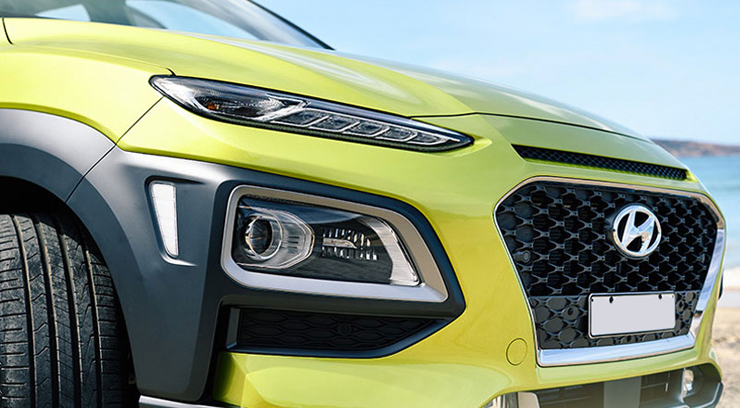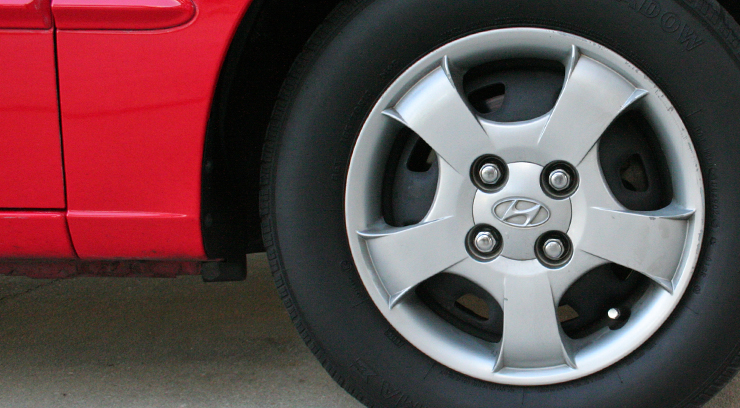
Most Annoying Cost-Cutting Features On Cheap Cars
Manufacturers have done it for decades; purportedly punishing buyers of their economy, or base model cars. You expect fewer features, lower grade interior materials, and overall lower tech in a vehicle with no options added, but some cost cutting measures take it a little too far. Decide to opt for the small engine choice; you get an awkward single exit exhaust on a rear bumper designed for duals. Did you reject the technology package? Enjoy the 9”x6” void in the center of your dashboard. Leather seats are not a priority? Ride along in “comfort” on burlap wrapped Gouda. There is economic, then there is just plain cheap; let’s take a look at some of the industry’s stingiest practices in cutting cost at the expense of value.

One of the easiest ways to spot a feature deficient automobile is by looking at the wheels. Hubcaps are not all that bad as they help give style where steel wheels lack, but a quick look back and you see what was once an artistic piece is now just imitation alloy wheel. It wasn’t too long ago when most vehicles had wheel covers, even many premium models. Cadillac had imitation spokes with crested center caps, Mercedes-Benz had dish style covers blessed with the Silver Arrows proudly on display, Muscle cars had rally style steel wheels with polished derby cap and trim rings to dress them up. Beside the Cadillac imitation spokes, these covers looked good because they didn’t try to be what they obviously are not: actual wheels. Modern hubcaps are embarrassingly simple in style, and unremarkable in design. Industry design language may have moved past spoked wheels with knock off caps, and dog dish covers, but it feels like there is not even an effort to create stylish wheel covers today. Many manufacturers even use imitations of their existing alloy wheels suggesting they don’t even take time to design covers as unique parts. The problem with wheel covers made to look like alloys is they don’t actually cover the wheel, thus negating their named purpose. Covers stylized as 5 spoke sport wheels expose large sections of stamped steel wheel they were meant to hide. Hubcaps that cover 55% of the wheel are like wearing Crocs that are 2 sizes too small. With the technology of wheel manufacturing today, is there any purpose for wheel covers? What’s to stop manufacturers from making steel wheels that don’t look like they belong on a trailer, or better yet just making alloy wheels standard? Is there really that much cost savings that it’s worth putting your trademark on a car that wears Crocs?

Keeping with frugality spotted from a mile away, unpainted exterior panels are the scourge of the 90’s. While not as common as it was some 20 years ago, some manufactures still have the audacity to sell a car that’s not completely painted! Most common on crossovers and sport utilities, this unfortunate practice has been excused for far too long. The 2019 Cadillac XT4 and XT5 are prime examples of unpainted trim without cause. It is doubtful anyone will be taking their front wheel drive Caddie through the thicket, and with the XT6 sufficiently coated in a glossy finish, you can’t help but wonder why not for the down brand models. Then you get real deep in the ugly with base trim pickups, where entire bumper assemblies and grilles get placed on trucks that people are expected to spend their hard earned money on. The old opinion was trucks are for work so who cares, but this just isn’t the case anymore. Many people like trucks as their regular mode of transportation and it’s no secret pickups have even expanded into the luxury market. The fact is if you have no choice but to buy in on the bottom tier, expect to get a real half-assed example of an otherwise great vehicle.

While speaking of bumpers, faux fog lamps must be addressed. The black plastic fillers, sometimes molded to have the texture of a lamp for some ridiculous reason, highlight that you bought a car that should have an option that yours doesn’t. It is puzzling why manufacturers go through the trouble of forming the textured black plastic piece to look like a lamp especially since it won’t fool anyone from thinking otherwise… because it’s solid plastic. The 2019 Mitsubishi Mirage is guilty of this design, while its competition like the Hyundai Accent successfully avoids this by styling the bumper cover to be compatible across all trims. By integrating the fog lamps into the shape of the bumper Mitsubishi is forced to use fake lamps, in lieu of making fog lamps standard equipment. Hyundai’s Accent can sub the fogs for a faux grille insert thanks to its versatile bumper design, and the casual shopper won’t miss the lamps because of this. Maybe if bumper covers for economy cars were designed with base options in mind, then afterthought trim like this could be avoided and style points retained.
Open the door to any cheap car and you get the same thing: synthetic greyish black fabric seats and greyish black injection molded interior chunks. Now you don’t expect the most supple nappa leather in an economy car, but with the amount of advancement in textiles today we can’t get cloth seats better than plastic fiber weave? The default color for cheap cars is always grayish black, as if to ensure minimal satisfaction. Not pitch black and not a light enough gray to look appealing, the eco black interior color seems to be the only low cost hue manufactures can provide. When you find yourself inside one of these road noise amplifying polypropylene cabins, you can’t help but ask: How much cost are they really saving by making these cuts versus how much is passed on in savings to the end customer. It only seems logical that a dealer would want you to buy the most marked up vehicle possible, but does it prove to benefit the brand to have cars packed full of “prop 65” furnishings driving around with their badge up front?

Infotainment screens have become the new centerpiece of the interior even rivaling the drivers’ gauges. Thanks to the Tesla Model S, you can tell a lot about the trim level of a car from the acreage of their touch screen. With consoles and even entire dashboard designs being built around ever expanding LCD screens, the problem of manufacturers continuing to avoid making accommodations for lesser equipped trims has become comical. Where an 11” touchscreen would be is a molded plastic bezel housing a 4.5” laggy touch interface with graphics from a Motorola circa 2006. As an example, take a look at the screen in the 2019 Ford Fiesta S. Ford gets some credit for having made unique housings for the two screen options, but the smaller base model screen is recessed in the dash so far you may forget it is even there. Finishing off the short optioned cars interior is the assortment of “dummy” switches, and buttons. Cars today have plenty of selectable functions, from suspension control, engine dynamics, and comfort features. People love the satisfying sound and feel of a good button, manufactures even spend time with focus groups researching the most satisfying types of sounds and sensations these switches make so it’s no surprise they pack interiors with plenty of them. The new for 2020 Ram pickup is a good example here, with a row of handsome toggle switches in the well-equipped models, there are only 2 awkwardly placed switches in a no man’s land of blanks on the trimmed down Tradesman and Big Horn.

The last item I will address is the one that irks me the most; how much does horsepower really cost? A quick search of the fastest cars available for under $20K will fetch a short list of “fun to drive” miserably powered hatchbacks and sub-compact front wheel sedans. It doesn’t take exotic materials, forged cranks, high compression pistons, and single technician assembly to provide a decent power output while maintaining reliability. The fact is, no matter how fun a small car may be to whip around autocross cones, or test tracks you will never drive on, if it takes full throttle and the better part of 10 seconds to merge onto the highway, it’s an under-performing slug as a real world car. Manufacturers that build 500, 600, even nearly 1000 horsepower engines for production vehicles covered by factory warranties, also choose to provide 116 HP nuggets for base model vehicles. The “eco” power plants are not proven to be any more durable than higher powered options, and in some cases wear faster due to the strain on such a small engine. Under-powered engines are especially frustrating when in the base model of a performance nameplate. The 2020 Impreza can have as much as 310 HP in the WRX, and as little as 152 in base trim. This deficit of 158 horses means more than twice the power is in the higher trim than the lowly base. Economy cars could benefit from being built with no less than 200 HP, as this would provide a power to weight ratio sufficient for most compact to midsize cars. For the Impreza, would the already stripped down base pose a legitimate threat to the sales numbers of their premium performance trim if it had just 50 more horses?
The million dollar question has to be: How much does appeal cost? The solution is not that all of the above be addressed to create an acceptable base model; rather there should be some attempt to attract buyers to every trim even the base of any car produced under your brand. Manufactures worldwide have improved since years past, with fewer examples of these issues finding their way onto dealer lots, but there is still plenty of room for improvement, I’m looking at you Detroit, and Japan…


